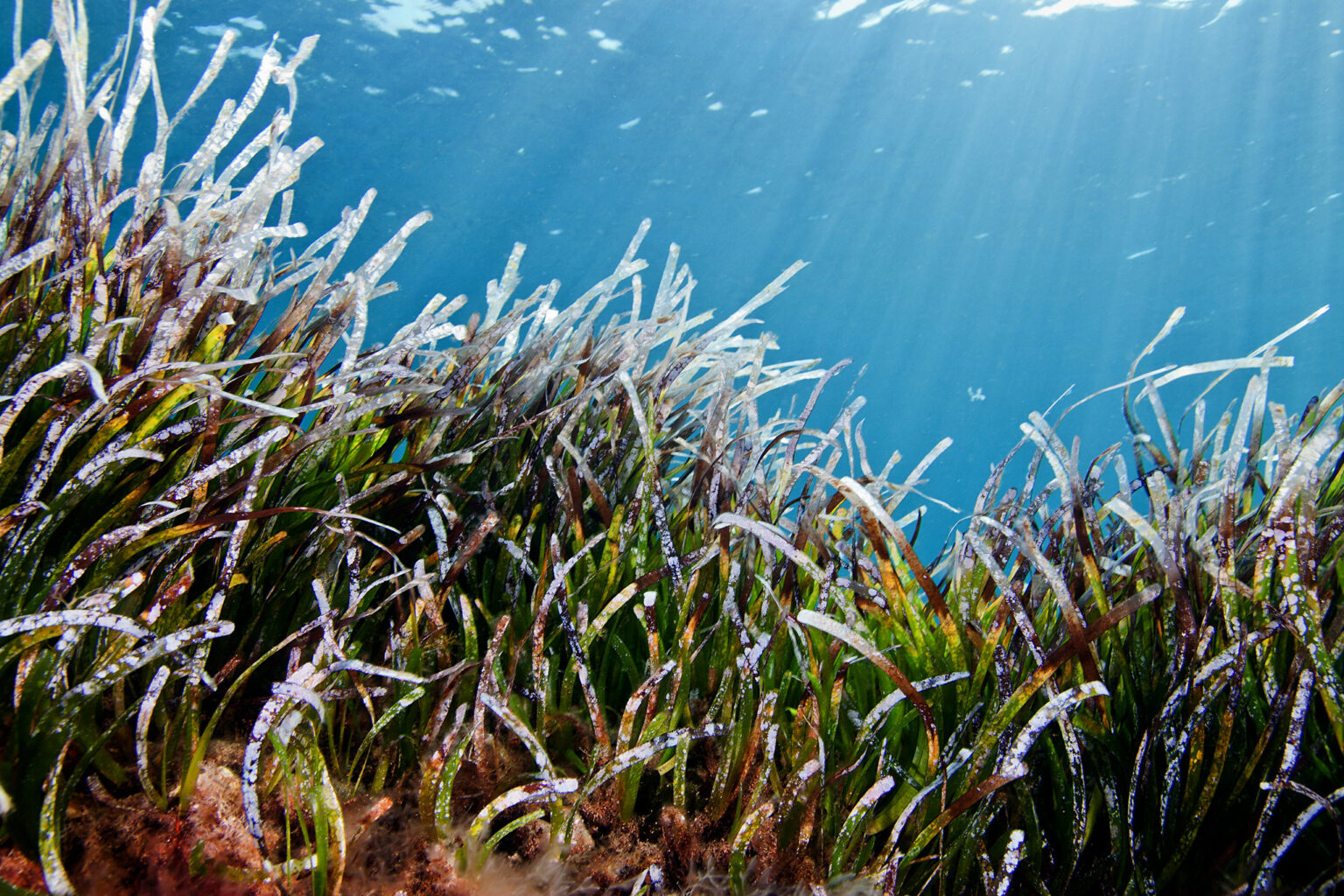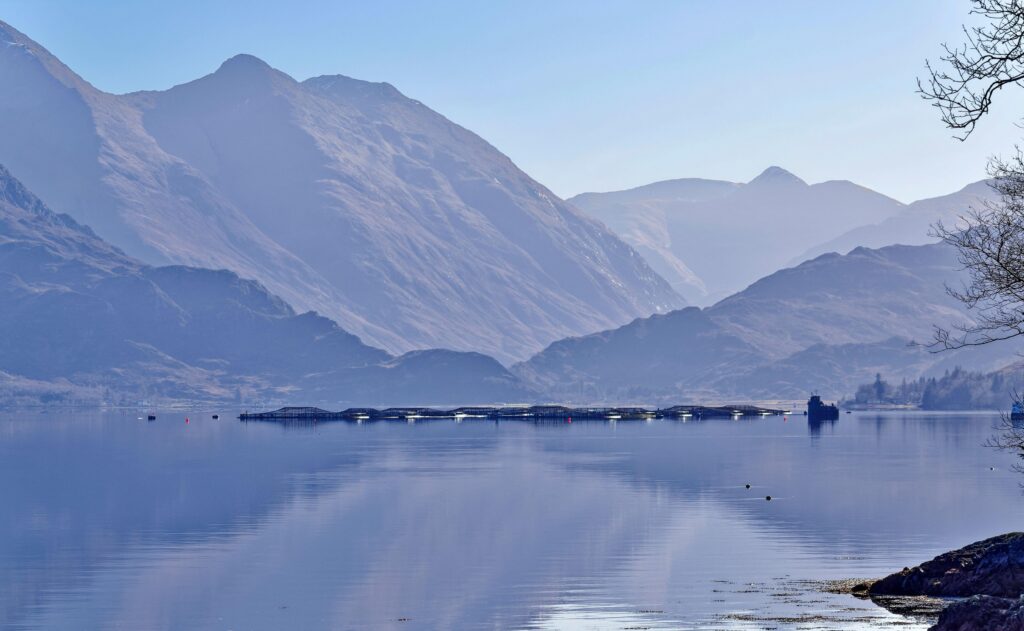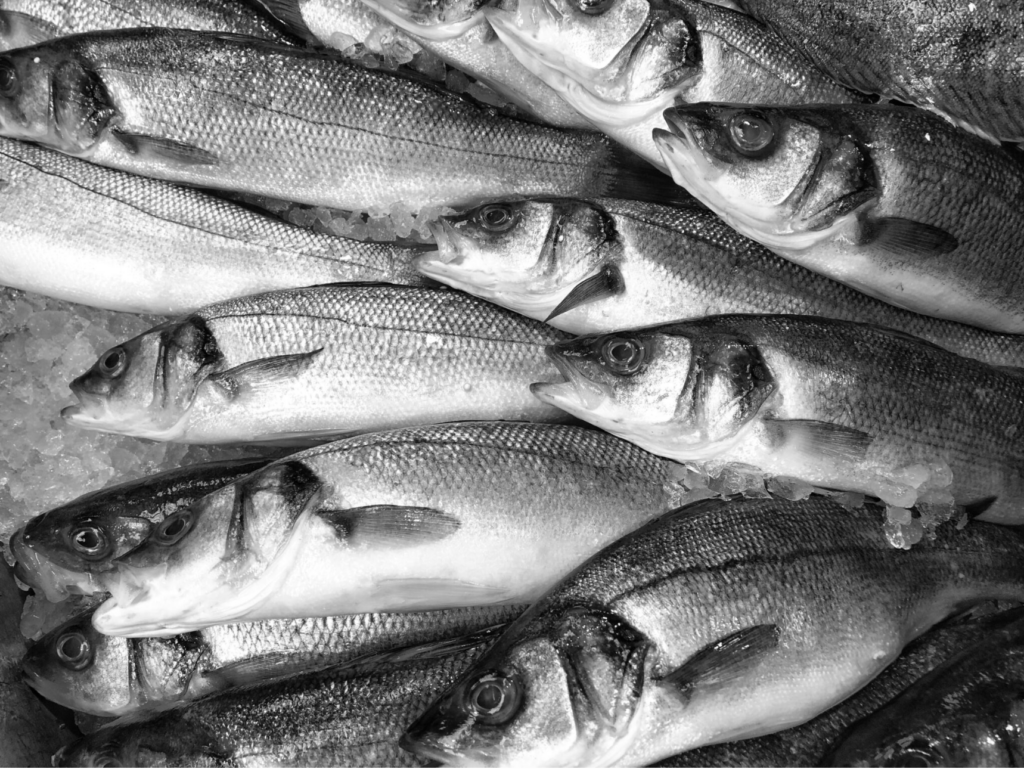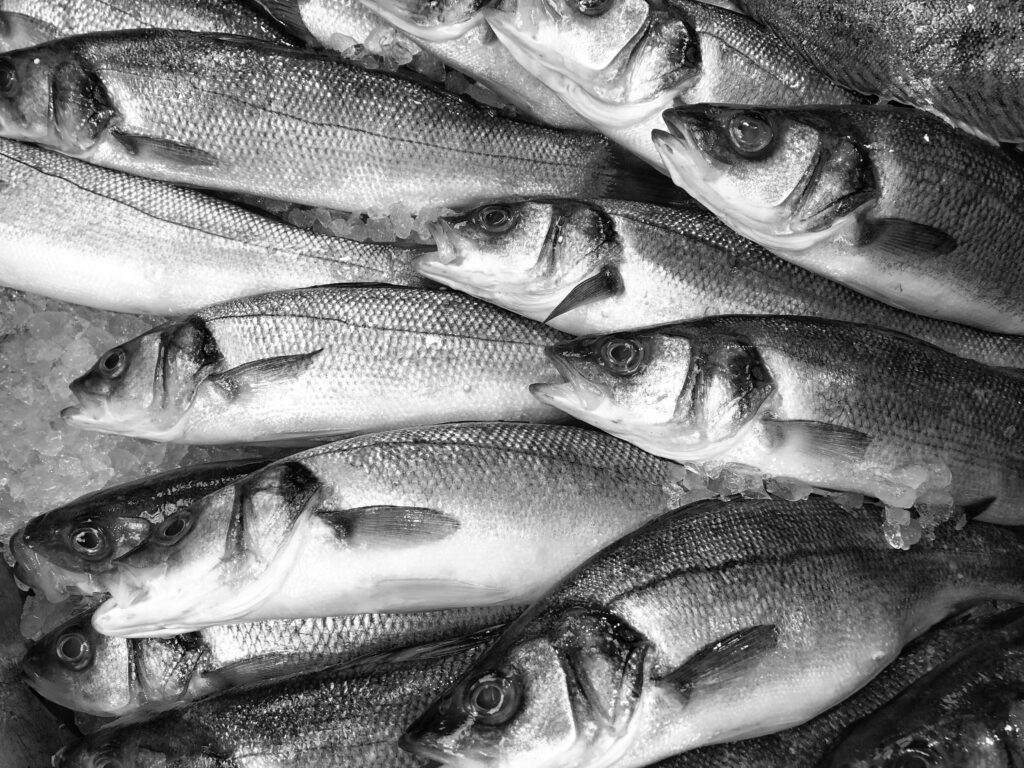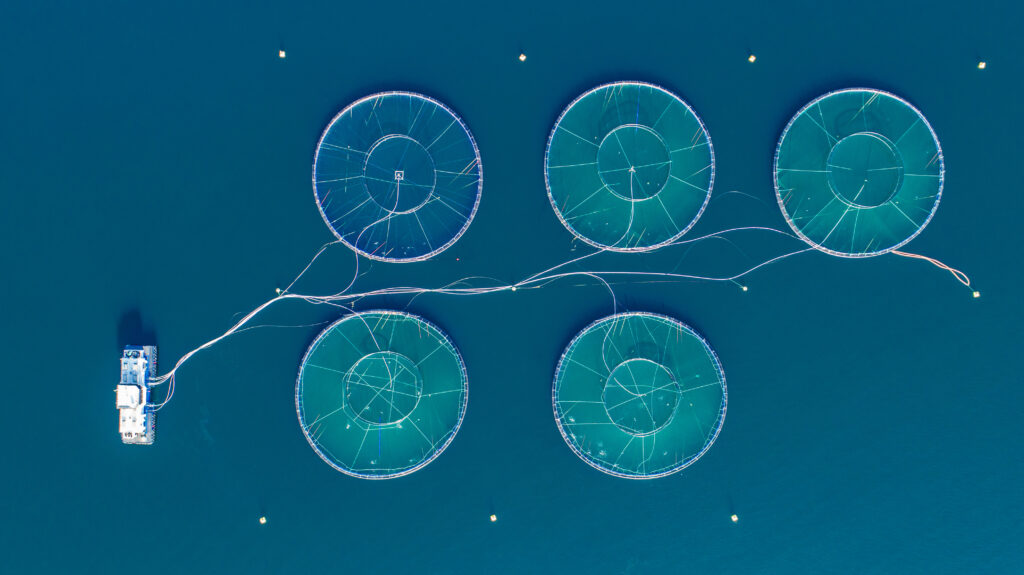Fish is often sold as the perfect climate-friendly dinner: highly nutritious and lower carbon than other forms of protein.
But new research is increasingly bringing some of these eco marketing claims into question. In part, because industrial fishing – scientists and campaigners say – is weakening the ocean’s ability to act as a carbon sink.
Over the last 60 years, the ocean, forests and other natural carbon sinks have absorbed over half of all man-made emissions, slowing down global warming. Yet, as temperatures rise, scientists warn such processes could be on the brink of collapse.
A new study suggests that industrial fishing is also threatening the sea’s capacity to absorb carbon, by disrupting a process known as the ‘biological carbon pump’, which sees carbon sequestered as dead marine animals drop to the bottom of the ocean.
Estimates suggest humans catch between one and two trillion fish every year. This is adding stress to habitats already endangered by warming oceans, which are estimated to help feed over three billion people, and to be home to more than 700,000 different species.
Although the exact level of carbon sequestration enabled by marine life is unknown, a 2023 study estimated it could be helping capture as much as 2.6 billion metric tons of carbon a year – equivalent to about 11 billion acres of U.S. forest.
In the UK, new research by the Blue Carbon Mapping Project, an initiative from research group Scottish Association for Marine Science, estimates that 244 million tonnes of carbon are stored in the seabed. Releasing that much carbon would be equivalent to consuming over two billion barrels of oil.
“We need to take a more detailed look at which type of fish [we are catching and eating], its origin [and] the fishing method before we say a wild fish is low carbon,” says Sevrine Sailley, an ecosystem modeller at the UK’s Plymouth Marine Laboratory.
Bottom Trawling’s Carbon Footprint
Carbon sequestration and storage in the ocean relies on dead marine animals, or the faeces from living ones, falling to and remaining at the bottom of the deep layer of the ocean or on the seafloor.
Fish hold carbon in their bodies, taken in from eating other fish or smaller marine animals, which dine on microscopic organisms called phytoplankton that have sucked CO2 from the water.
But, when human activity removes fish from the water, that carbon is no longer sequestered. Instead, it is released as fish are eaten, through emissions from human waste, or as they decay on land.
While the large volume of fish being removed is undermining the oceanic carbon sink, experts say it is only one part of the larger picture. Another key factor is how seafood is fished from the sea.
The carbon footprint of fishing has soared in recent decades with the rise of bottom trawling, a catch method that drags nets along the seafloor, and is used for species including cod, haddock, hoki, hake, halibut and sole.
Bottom trawls use huge metal frames to keep the nets open, which can weigh as much as 5,000 kilos, and can rip up the seabed.
In January, a team of scientists estimated that bottom trawling released about 370 million metric tons of CO2 a year, roughly the same amount produced by 88 million petrol-powered cars over the same period.
Limits of Labelling
In late 2014, the EU introduced labelling for fish that shows catch-methods used, meaning that consumers can theoretically avoid products caught using bottom trawls. But a 2021 study found the accuracy of such declarations was patchy. In the UK (part of the EU at the time), only 63 percent of products displayed all mandatory information, according to the analysis.
Mike Walker, an ocean campaigner and conservation consultant, says that regardless of accuracy, governments should not put the onus on consumers.
“It is preposterous to think that consumers in a shop or restaurant can make that decision [about the least climate harmful fish to eat or buy]. The information required is vast and complex,” says Walker, who co-authored a briefing on fishes’ role as carbon engineers for environmental campaign group Our Fish.
“Too many governments have abdicated their responsibility to the consumer in the name of choice. And that is horseshit,” he says. “In an ideal world you wouldn’t have to choose, you would have confidence in the system and in the regulations.”
Farmed Fish is Not the Answer
In recent years, the farmed fish industry has marketed itself as an alternative solution. But there is a major problem with this proposal: farmed fish are fed on wild fish also caught from the sea.
Fishmeal and fish oil are made from ground up small oily fish, and fed to farmed carnivorous fish such as salmon, trout, sea bream, and sea bass, as well as pigs, chickens, sheep and cattle.
By one estimate, about 23 percent of the global fish catch is turned into fishmeal and over 70 percent of farmed fish now rely on that feed, up from 60 percent in 2000.
While the fish in fishmeal and fish oil are not usually caught using bottom trawlers, removing them from the ocean still disrupts the carbon sink. The process is also very inefficient: several kilos of wild fish are needed to produce one kilo of feed.
The fish farming industry says it is taking action to address its footprint. Javier Ojeda, general secretary of the Federation of European Aquaculture Producers, told DeSmog that producers are working to reduce the amount of wild fish required.
“Today, between 30 percent and 40 percent of marine ingredients included in farmed fish feed originate from by-products of the processing of other fish (wild or farmed). This means a significantly smaller proportion of wild fish must be fished to produce fish feeds specifically”, he said in an email.
But campaigners say that this doesn’t go far enough, particularly with demand for fish among consumers rising.
For Walker, avoiding farmed fish fed on fishmeal and fish oil is one of the simplest routes to helping restore oceanic health.
He suggests directly eating the anchovies, sardines, mackerel and herring that are used in fishmeal. “Yes, they can get overfished, but they can recover quicker, and they are full of [highly nutritious] fatty acids”, he says.
The other option may be to eat more farmed shellfish. Unfed aquaculture, which includes the farming of species like oysters, clams and mussels that take food directly from the water, is increasingly being considered as a more sustainable option for both fishers and consumers.
Government Action
While scientists and campaigners agree that governments must act to protect oceanic health and carbon storage capacity, there is much debate about the best route.
Enric Sala, marine ecologist and National Geographic’s explorer in residence, proposes increasing the number of Marine Protected Areas (MPAs) – conservation zones that restrict human activities in the oceans – especially those that ban extractive activities like fishing and bottom trawling.
More than 5,000 MPAs have so far been introduced worldwide. As well as restoring ocean ecosystems, MPAs have seen larger fish populations, and therefore more stored carbon, and boosted catches for fishers on the reserve’s margins.
But Mike Cohen, who leads the UK’s National Federation of Fishermen’s Organisations, says MPAs are not always effective.
“MPAs are a poor tool for fisheries management. Fish, after all, move. We are seeing species’ ranges changing all the time, at least in part as a result of warming seas. An MPA that protects a stock in one area is likely to be in the wrong place in a couple of years’ time,” he says.
Other researchers and campaigners suggest that governments should also focus on redirecting subsidies toward more sustainable fishing, and methods that use less fuel.
Total global subsidies aimed at boosting fishing capacity, which critics say encourage overfishing, were valued at $22 billion in 2018. Despite calls by Pacific Island states to cut these subsidies, World Trade Organisation delegates failed to agree on limiting them in March.
“It would not cost a lot of money to pay fishers to fish less, or differently, so that ecosystems could deliver more in terms of climate mitigation,” says campaigner Mike Walker.
In practice, though, such measures may be difficult to agree, Walker adds: “What is fished, by who and how, is basically a political decision.”
Ocean Ignorance
Ultimately, advocates say we must also tackle another underlying problem: a general ignorance about the ocean and how it works as a climate sink.
“We are land animals, we tend to view the world through our terrestrial lens,” says Farah Obaidullah, founder of the advocacy group The Ocean and Us and editor of a book by the same title. “We don’t learn much about the ocean, or the importance of the ocean in planetary systems.”
Obaidullah thinks people are likely to overestimate the ocean’s ability to restore itself. ”For higher income countries, the fish we eat is often caught by gigantic trawlers” that remove more animals than the ocean can replenish.
“We don’t talk about the trillions of animals we are taking out of the sea. We tend to think of the wild as a place that will just produce more”, she says.
Subscribe to our newsletter
Stay up to date with DeSmog news and alerts


